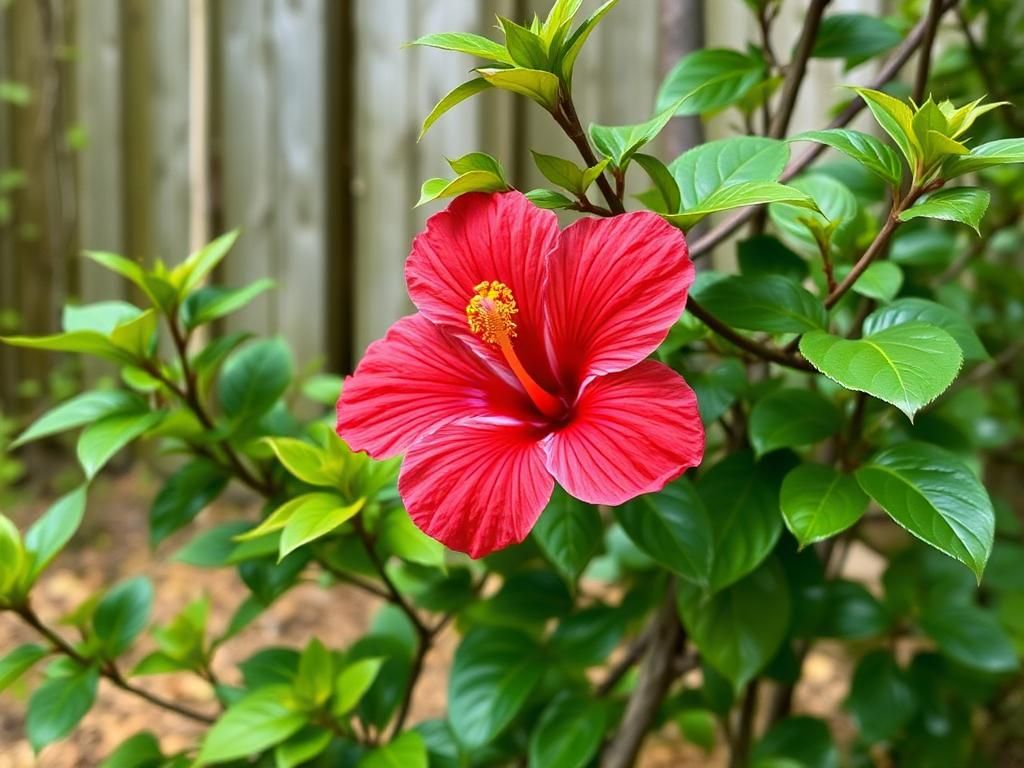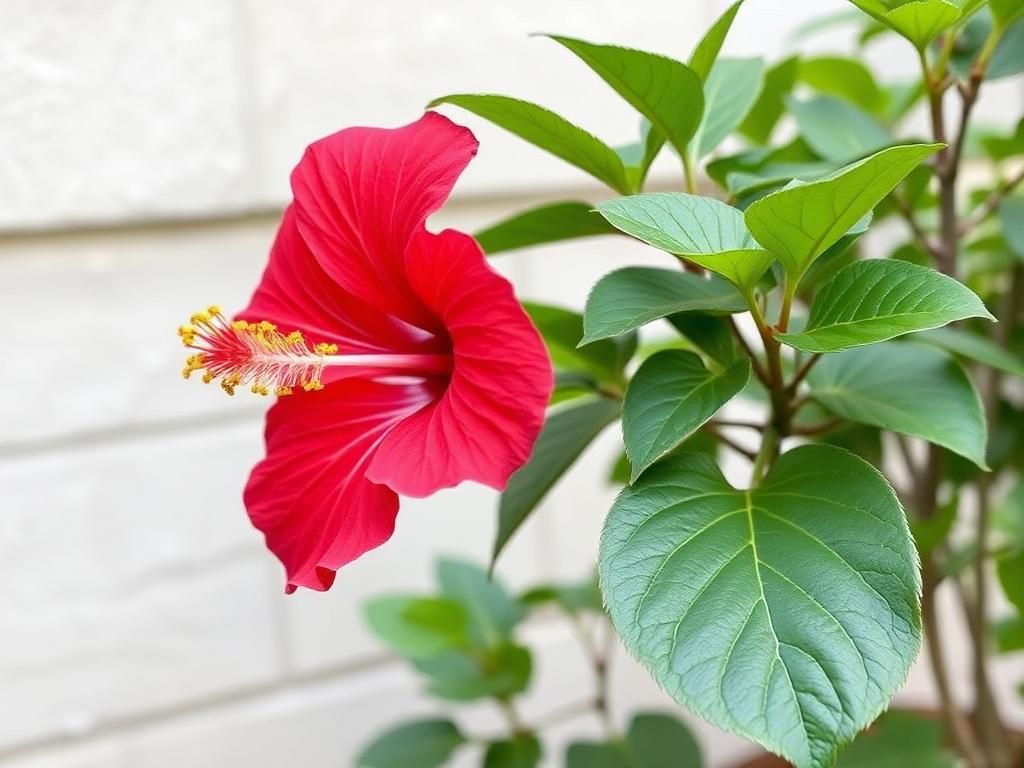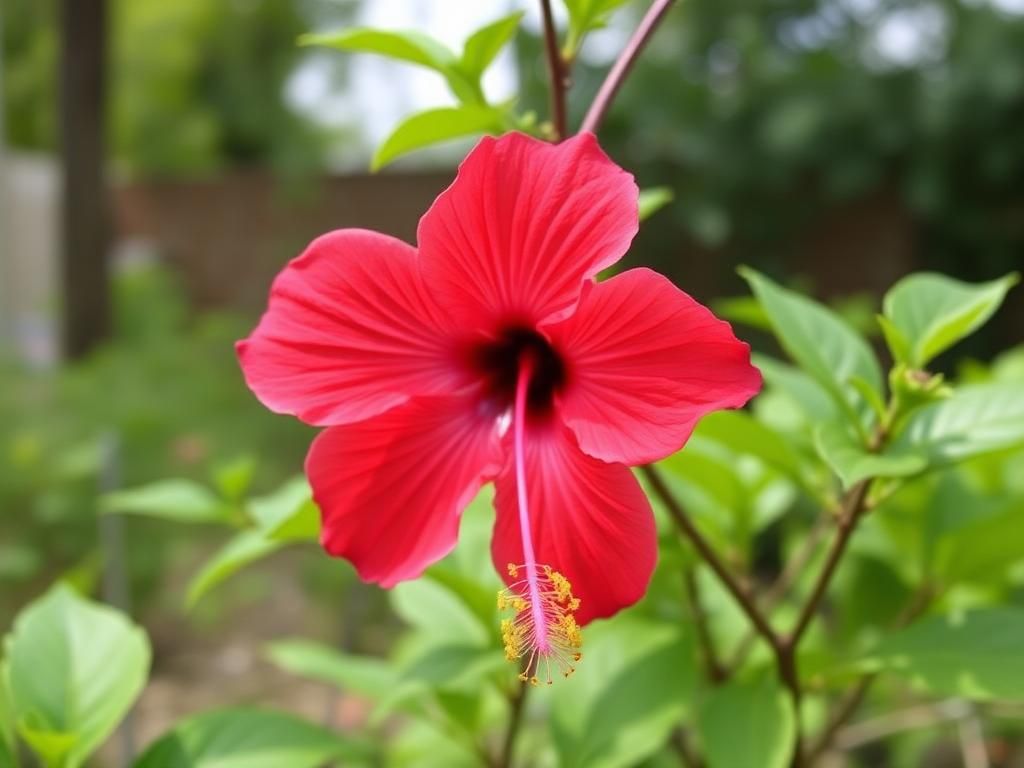The flower red hibiscus is a vibrant and enchanting plant known for its large, showy blooms and striking appearance. Belonging to the family Malvaceae, the hibiscus genus includes various species and hybrids prized in gardens and landscapes worldwide. The cultural significance of the red hibiscus spans many regions, where it symbolizes beauty, vitality, and often plays a role in traditional practices. This article delves into the botanical characteristics, cultivation methods, uses, cultural significance, and challenges of growing the flower red hibiscus, providing a comprehensive understanding of this remarkable plant.
Botanical Characteristics
Scientific Classification
The red hibiscus is classified under the following scientific taxonomy:
- Family: Malvaceae
- Genus: Hibiscus
- Common Species of Red Hibiscus:
- Hibiscus rosa-sinensis – Commonly known as Chinese hibiscus or shoe flower, this species is often cultivated for its stunning blooms.
- Hibiscus sabdariffa – Known as roselle, this species is notable for its edible calyces and is commonly used in herbal teas and cooking.
Physical Features
The physical characteristics of the flower red hibiscus are striking:
- Petals: The flower generally features five petals that can range in color from deep red to pink and even white with red throats, creating a dramatic visual effect.
- Leaf Structure: The leaves are typically broad and lobed, showcasing a dark green hue with a glossy texture.
- Growth Habit: Depending on the species, red hibiscus plants can range from 3 to 10 feet tall, often forming an upright shrub.
Geographic Distribution
The red hibiscus is native to tropical and subtropical regions, making it suitable for warm climates. It’s commonly found in:
- Countries in Southeast Asia, such as Malaysia, Thailand, and Indonesia, where it holds cultural importance.
- The Caribbean and Pacific Islands, particularly Hawaii, where it is celebrated in local traditions.
- Parts of Africa and Central America, thriving in gardens and wild landscapes alike.
Growing Red Hibiscus
Ideal Growing Conditions
To ensure optimal growth of the flower red hibiscus, specific conditions are necessary:
- Sunlight Requirements: These plants thrive in full sun, requiring at least 6-8 hours of direct sunlight daily for prolific blooming.
- Soil Type and pH Levels: Well-drained, loamy soil with a slightly acidic to neutral pH (around 6.0-7.0) is ideal.
- Temperature and Humidity Preferences: Red hibiscus enjoys warm temperatures, ideally between 60°F and 90°F, along with moderate to high humidity.
Planting Techniques
Planting the flower red hibiscus can be achieved through various methods:
- Propagation Methods: Seeds or cuttings can be used for propagation. Seeds should be soaked for 24 hours prior to planting; cuttings should be taken from healthy plants.
- Ideal Planting Seasons: Early spring is the best time to plant, allowing the plant to establish roots before the heat of summer.
- Spacing and Positioning: Space multiple plants about 3 to 5 feet apart to ensure adequate air circulation and sunlight exposure.
Care and Maintenance
Maintaining the health of your red hibiscus plants requires attention:
- Watering Requirements: Regular watering is crucial, especially during dry spells, but ensure that the soil remains well-drained to avoid root rot.
- Fertilization Schedule: A balanced fertilizer every 4-6 weeks during the growing season will encourage robust growth and abundant blooms.
- Pruning and Deadheading Tips: Prune the plant in late winter or early spring to promote growth and remove spent flowers to encourage more blooms.
Uses of Red Hibiscus

Ornamental Uses
The visually stunning flower red hibiscus is often utilized in various decorative ways:
- Landscaping and Garden Design: Its vibrant flowers and lush foliage make it a fantastic choice for hedges, borders, or standalone features in gardens.
- Indoor Plant Potential: Dwarf varieties can be grown indoors, adding a pop of color to homes and offices.
Culinary Uses
Beyond aesthetics, the red hibiscus has numerous culinary applications:
- Edible Flowers and Recipes: The petals of the flower red hibiscus can be used in salads or as garnishes. Additionally, they can be candied for desserts.
- Hibiscus Tea and Its Health Benefits: Dried hibiscus flowers are commonly brewed into tea, known for its tart flavor and numerous health benefits, including lowering blood pressure and aiding digestion.
Medicinal Uses
Traditional medicinal uses of flower red hibiscus are well documented:
- Traditional Medicinal Applications: Used in folk medicine, hibiscus is known for its role in managing hypertension and digestive issues.
- Antioxidant Properties: Rich in antioxidants, the red hibiscus is believed to combat oxidative stress and may have anti-inflammatory properties.
Cultural Significance
Symbolism in Different Cultures
The flower red hibiscus holds a deeper meaning in various cultures:
- Meaning in Asian Cultures: In places like Malaysia and India, the red hibiscus is associated with beauty and femininity, often used in adornments for women.
- Historical Significance in Hawaiian Culture: In Hawaii, the hibiscus is the state flower, representing hospitality and beauty, often worn in hair as a cultural sign.
Festivals and Traditions
The red hibiscus plays a vibrant role in cultural events:
- Events Celebrating Hibiscus: Various festivals across the world celebrate the flower’s beauty, such as the Hibiscus Festival in the Philippines, showcasing art and music.
- Artistic Representations in Literature and Art: The hibiscus has inspired numerous artists and writers, appearing in poetry and visual arts as a symbol of exotic beauty.
Challenges in Growing Red Hibiscus
Pest Concerns
Like any garden plant, the red hibiscus faces challenges with pests:
- Common Pests: Aphids, spider mites, and whiteflies are significant threats to the health of hibiscus plants.
- Organic Pest Control Methods: Introducing beneficial insects or using neem oil can effectively manage pest issues without harmful chemicals.
Disease Management
Disease prevention is key to growing healthy hibiscus:
- Diseases Affecting Hibiscus: Root rot and various fungal infections can plague hibiscus plants, particularly in poorly drained soils.
- Prevention Strategies: Ensuring good air circulation and proper watering practices can minimize disease risks while promoting plant health.

Conclusion
The flower red hibiscus is more than just a visually appealing plant; it plays crucial roles in culture, cuisine, and health. By understanding the growing conditions and uses of this remarkable plant, you may be inspired to cultivate it in your own garden, embracing its beauty and benefits.
| Characteristic | Details |
|---|---|
| Family | Malvaceae |
| Genus | Hibiscus |
| Common Species | Hibiscus rosa-sinensis, Hibiscus sabdariffa |
| Ideal Sunlight | 6-8 hours of direct sunlight |
| Soil Type | Well-drained, loamy soil |
| Propagation Methods | Seeds, cuttings |
| Watering | Regular watering, well-drained soil |
FAQ
1. What climate is best for growing red hibiscus?
The flower red hibiscus thrives in tropical and subtropical climates.
2. Can red hibiscus grow in pots?
Yes, dwarf varieties of red hibiscus can successfully be grown in pots indoors or on patios.
3. How often should I water my red hibiscus?
Water regularly, allowing the top inch of soil to dry out before watering again.
4. Is hibiscus tea healthy?
Yes, hibiscus tea is rich in antioxidants and can help lower blood pressure.
5. What are common pests that affect red hibiscus?
Aphids and spider mites are common pests for hibiscus plants.
6. How do I prune my hibiscus?
Pruning should be done in late winter or early spring to promote new growth.
7. Can the flower red hibiscus be used for cooking?
Yes, the petals of the hibiscus flower are edible and can be used in various recipes.
8. What diseases affect red hibiscus plants?
Common diseases include root rot and fungal infections.
9. How do I propagate hibiscus?
Hibiscus can be propagated through seeds or cuttings taken from healthy plants.
10. What is the symbolism of the red hibiscus?
The red hibiscus symbolizes beauty and femininity in many cultures.
